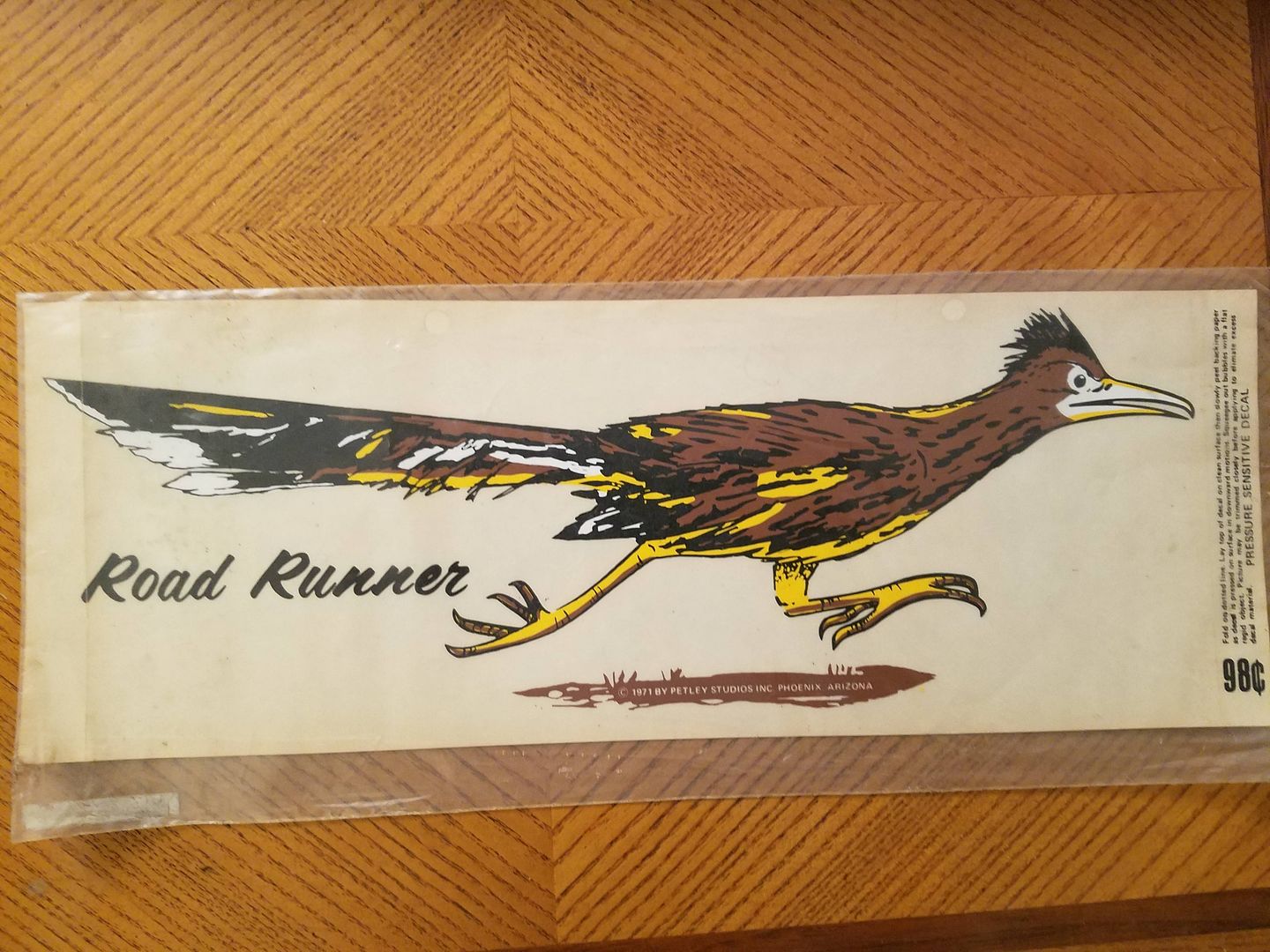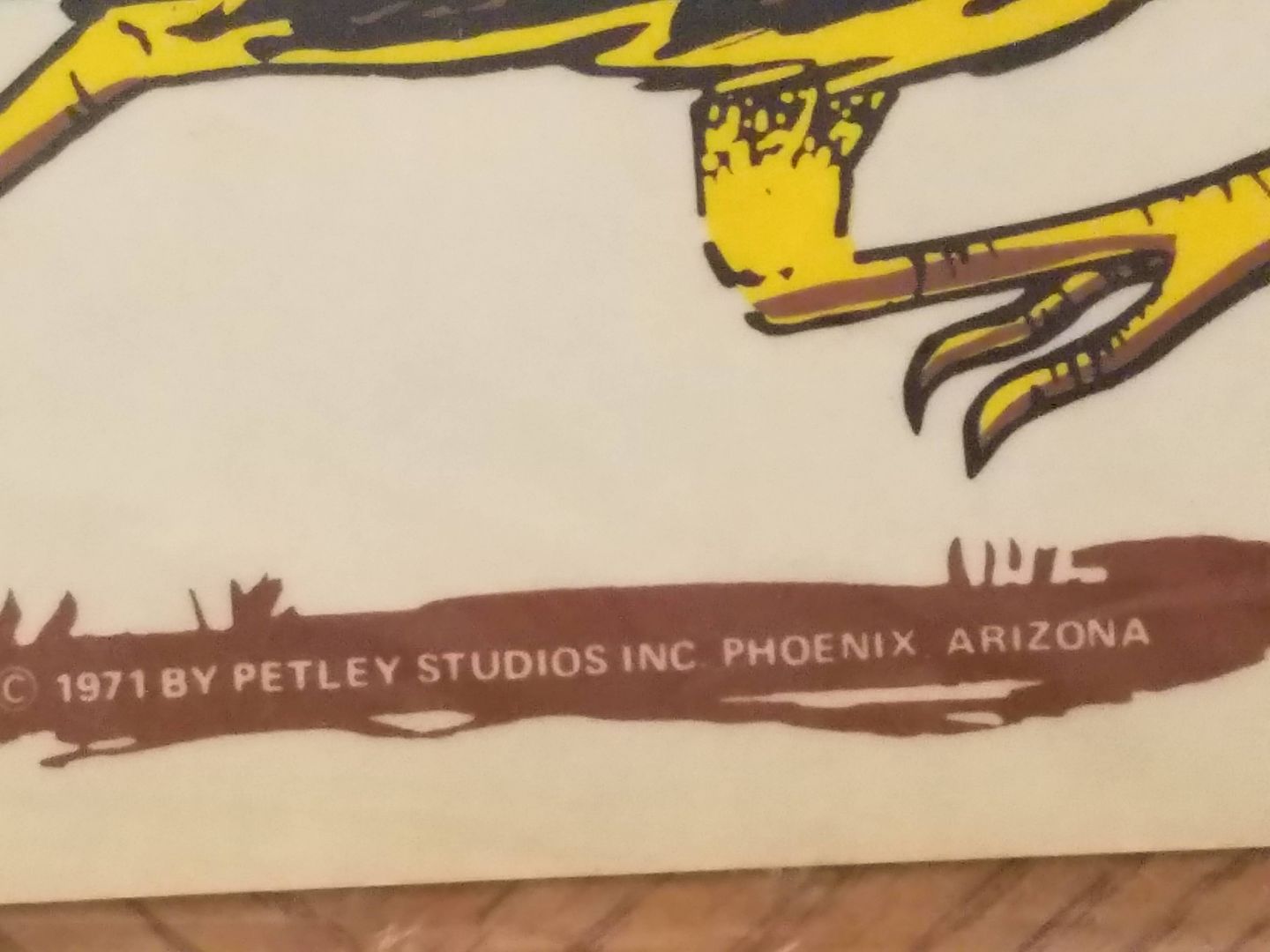Nice Anvil! I keep looking at the HF one. Didn't think of looking on CL for a good one. Currently using a section of I beam.
Roadrunner in the thread title reminded me of a sticker I bought when I was about 13 Y/O that's never been out of the package. So I thought "Where is that damn Roadrunner sticker anyway?" and had to go find it......
[URL=http://s240.photobucket.com/user/NOTATA/media/20180903_200921_zpsyyodnqcr.jpg.html] [/URL]
[/URL]
[URL=http://s240.photobucket.com/user/NOTATA/media/20180903_201256_zpspi2fhdgf.jpg.html] [/URL]
[/URL]
Toyman01 said:I would like to build a knife or two.
That and sometimes you just need to beat the crap of of something.
understood :)
the guy i mentioned is a construction worker and from every job he takes some piece of metal and forms a knife out of it to commemorate the job. kinda cool. nothing like world class sellable but still a cool idea
I Was thinking, yeah, that's neat. But how much can one usually go for anyway? Search CL... A THOUSAND DOLLARS WHAT?!
captdownshift said:I now suddenly want to swap a modular Ford 5.0 into a Plymouth...
Tow it on a trailer behind it, while running.
dculberson said:I Was thinking, yeah, that's neat. But how much can one usually go for anyway? Search CL... A THOUSAND DOLLARS WHAT?!
I don't think anyone makes them like they used to. The older anvils were cast and heat treated. Many of them had hardened decks attached. Everything built now is either very expensive, or plain cast similar to what HF sells. The other issue is size. The biggest one HF sells is 55 lbs. You can find old ones up into the 300 lb range.
Nice find. I've had a standing search on local CL for years but have never come up with one that was decent for reasonable money.
John Welsh said:In reply to Datsun310Guy :
Tiny, aren't they? I expected they would be larger.
Some are bigger than others.

There was an interseting video on YOutube in the last week or so about how anvils, which included the method for converting the identifying numbers to actual inteded weight. Abom79 was the author of the video...
I just sold my grandfather's 200 pound Peter Wright anvil on eBay for 1500 bucks. The rest of the smithing tools went in separate auctions. He got this stuff from a genuine blacksmith shop right before moving out to California from Bahstin, Mass in about 1925. I've had it for 25 years with the intent of taking up blacksmith art. Much to my dismay, it never did happen so it was time to send it off to someone who could use it.
You should be able to find three sets of numbers on the side like this: 1 3 7 The first figure to the left is hundred weights which equal 112 pounds. The next figure is quarter hundred weights which equal 28 pounds and the last number is whole pounds. The three are added together for the total weight. Those were the numbers on my anvil which totalled exactly 200 pounds. And it did.
Try not to hit the anvil too much without something between the hammer and the anvil. That's how most anvil get the edges screwed up. My grandfather was a stickler about this so the anvil was in pretty amazing condition for a 120 year old tool that gets pounded on for a living.
rdcyclist said: a 120 year old tool that gets pounded on for a living.
Why was the grandma escort nicknamed "Anvil"?
Toyman01 said:dculberson said:I Was thinking, yeah, that's neat. But how much can one usually go for anyway? Search CL... A THOUSAND DOLLARS WHAT?!
I don't think anyone makes them like they used to. The older anvils were cast and heat treated. Many of them had hardened decks attached. Everything built now is either very expensive, or plain cast similar to what HF sells. The other issue is size. The biggest one HF sells is 55 lbs. You can find old ones up into the 300 lb range.
People always say something is as simple as an anvil - but good anvils are often made from 3 or 4 separate grades of metal in different places, with each grade selected for different hardness, impact absorbtion, etc.
I "tossed" it up on the bench to give it a closer once over. It's in fair shape. The edges are a little beat up, and someone that couldn't swing a hammer has used it before, so it has dents in the horn and deck. Nothing too bad though. For now I'm going to leave it as is and use it.
There are no identifying marks on it other than the weigh numbers.
Assuming the numbering is standard across all anvils, this one is a 0, 3, 22. By my math it's a 106 lb anvil. Good enough. At least I'll be able to move it.
The next time I take a tree for fire wood, I'll be saving me a fat chunk of oak to make a base for it.




That's decent little anvil. I'll tell you moving that 200 pounder and the 120 pound swage block every time I needed something stored in the area was challenging.
The key thing about old anvils is that most of them were used several hours/day for years. The constant pounding of hot steel work hardened the face and horn. You can't buy a new anvil with that kind of temper. At least that's what the old smiths I've spoken with say. Could just Old Smith's Tales...
Here's a picture of mine...
When I was going to blacksmithing school, I got the word from my uncle that he had my great grandfather's anvil, and all I had to do was come get it. Great grandpa was a ferrier and wainwright in Glen Burnie MD, just south of Baltimore. I grew up with a picture of him forging metal on the wall. With research, it is doubtful that this was his, but I'm pretty sure this was the anvil my Dad had when I was young. Regardless, free anvil, I'm stoked. I do think the stump idea is the way to go, but being stubborn, I made one with a one ton truck disc brake rotor flat on the floor, welded the 3" pipe to that, put the wheel over the whole contraption, and finally, a piece of thick channel for a top. My thinking was that all this would give me a "harder hit" than the stump. I'm still not sure if that's good or not, or even true.
The one bit of advice I can give is to put it at the right height. Basically, if you let your arm fall to your side, the face of the anvil should be at knuckle height with your hand in a loose fist. Play around with a hammer to get a good feel. It turned out lower than I expected, but once forging, made sense. Sure the metal is hot, but you are beating it into submission. I like a wood splitting stump low, too.
Anywhoo, Sweet acquisition.
Here is ours, a 140# Hay Budden dated approximately 1912. HBs don't use the hundredweight system, so the number stamped on the side of the heel is the "as made" weight.

Only stored on the benchtop, we have a wood block for actual use. Looking at it reminds me I need to oil it.
Anvils are really hard to find. I suspect that many of them were scrapped during the war.
And beware of ASOs...
I have my grandfathers anvil, it was a bear to lift it out of my dads sebrings trunk by myself. I’ve used it as a flat pounding surface and bent some patch’s on it but that’s the extent of things so far. Yours has a really nice shape.
Posted on this thread earlier. I spent a lot of time in blacksmith shops as a young man.
It's been almost 30 years since I've worked on the harness racing tracks, but that's what I dreamed about last night. Really took me back.
You'll need to log in to post.